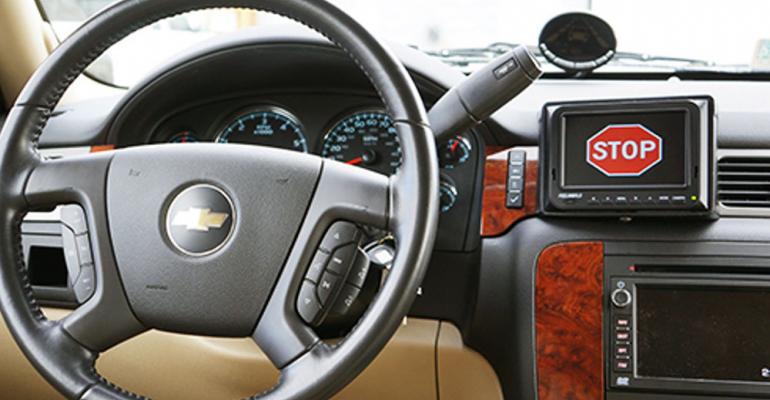A Virginia Tech graduate student seeks to eliminate roadside traffic signs and signals and install them on a vehicle's instrument-panel display.
This would eliminate stopping at stop signs or red lights when no other cars are in the intersection, saving time and fuel for drivers.
Alexandria Noble, a student in the school's Human Factors Transportation Safety Graduate Certificate Program, is collaborating on the project with Virginia Tech's Transportation Institute, which has been researching connected-vehicle technology.
The goal is for “smart” vehicles to communicate with each other and the surrounding infrastructure to prevent collisions and reduce highway congestion.
“This is part of our initial efforts to integrate more revolutionary safety concepts with the growing field of connected-vehicle technology,” says VTTI Director Thomas A. Dingus.
“Adaptive stop/yield signs have the potential to be a long-term solution for not only minimizing traffic problems experienced on increasingly congested roadways, they may also help mitigate negative environmental impacts.”
The concept was tested during a 17-week project in which dozens of participants drove cars outfitted with small GPS-like instrument-panel screens that flashed stop or yield signals to drivers as they approached intersections. Other cars in the intersections were driven by institute researchers trained to prevent collisions with those driving test vehicles.
Noble even provided scenarios in which the automated signs failed to flash to test the reactions of drivers.
“This study was set up to take place in a future where all static traffic control infrastructure, such as stop signs and yield signs are no longer needed, and you have an adaptable in-vehicle display telling you when you need to stop and when a stop is unnecessary,” she says.
In addition to cutting fuel consumption and vehicle emissions, the system would save government agencies the cost of erecting and maintaining roadside signs. Warning signs such as those alerting drivers of freezing bridge roadways that are not needed, except in winter, would be eliminated – except virtually.
The removal of road signs certainly would limit the number of revenue-generating traffic tickets handed out by police annually, but safety would be improved and the cost associated with maintaining signs would be eliminated.
No testing has been attempted yet at intersections controlled by traffic lights, and much more work is required before such a system is ready for production vehicles.
Two age demographic groups were tested: those 18-25 years old and more than 50 years old. While her analysis of the data is not yet complete, Noble tells WardsAuto there was virtually no difference between drivers in the two groups in making appropriate, fully compliant stops.
However, the older group was more accepting of the system, especially in intersections where the driver's line of sight was obstructed. But both groups expressed generally positive views of the system.
Noble's project received $150,000 in funding from the Transportation Research Board of the National Academy of Sciences.





